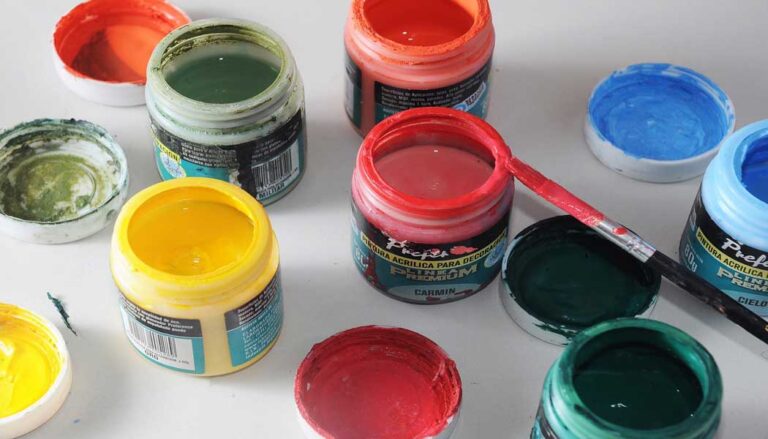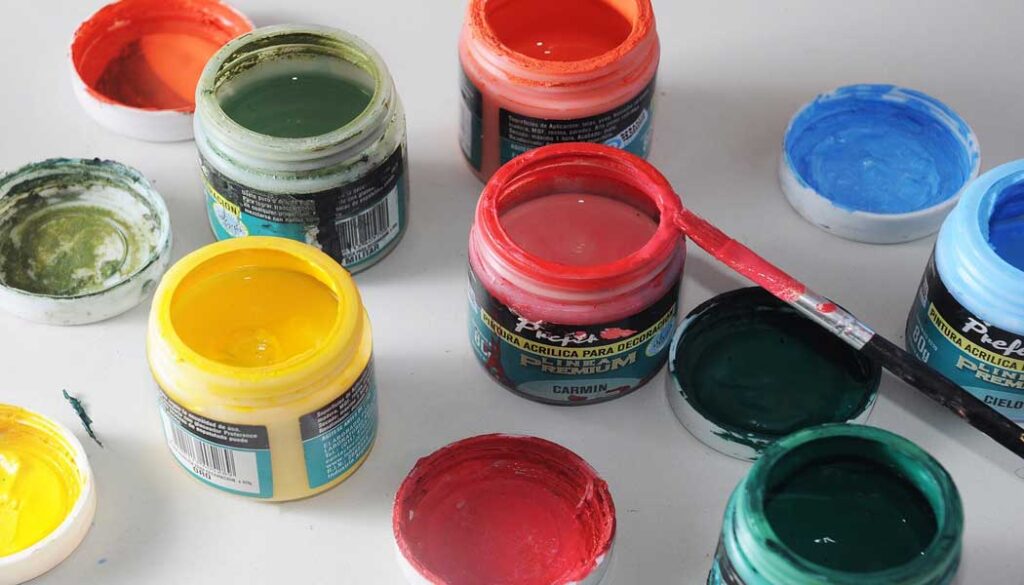
Is Tempera Paint Flammable? [Get the Answer]
Tempera paint is not flammable for being a water-based paint. Tempera paint is a popular choice for artists and educators. This paint is known for its vibrant colors and ease of use.
However, when it comes to safety, understanding its flammability characteristics is essential. Let’s learn about the flammability of tempera paint and explore its ingredients and potential risks associated with its use.

Whether you’re an art enthusiast, a teacher, or a concerned parent, knowing whether tempera paint is flammable will help ensure a safe and enjoyable creative experience.
What Is Tempera Paint?
Tempera paint is a type of water-based paint widely used in the world of art and education. It consists of pigments (color particles) mixed with a water-soluble binder, often egg yolk, though modern variations may use other binders like gum Arabic or synthetic compounds.
Tempera paint is known for its quick drying time, vibrant colors, and opaque finish. These features make it a popular choice for various artistic applications. It can be used on a variety of surfaces, including paper, cardboard, wood, and canvas.
This type of paint is favored by artists and educators for its ease of use and versatility in creating beautiful, long-lasting artwork.
Is Tempera Paint Flammable?
Tempera paint is generally considered non-flammable because it is water-based. Moreover, it does not contain highly flammable ingredients like solvents or oils found in some other types of paint.
Its primary components are pigments and a water-soluble binder, traditionally made from egg yolk. But this paint is more commonly using synthetic binders like gum Arabic today. These components make tempera paint inherently less prone to combustion.
However, it’s essential to understand that the flammability of a material can depend on various factors, including the context in which it is used. Here are some important considerations regarding the flammability of tempera paint:
- Paint Drying Process
Tempera paint dries by the evaporation of water. While the paint itself is not flammable, the drying process involves the release of water vapor. In certain conditions, this vapor can contribute to fire hazards.
For example, if there are open flames, sparks, or extremely high temperatures in the vicinity, the water vapor might enhance the combustibility of other materials nearby.
- Surface Flammability
The flammability risk associated with tempera paint depends on the surface it is applied. If tempera paint is used on a flammable surface like untreated wood, paper, or fabric, there is a potential fire hazard.
Over time, the water in the paint can be absorbed by these materials and leaves behind dry, flammable residues that can ignite more easily.
- Aerosol Sprays
When tempera paint is used in aerosol spray form, there may be additional flammability concerns. The propellants used in aerosol paints can be flammable, and they can pose a fire risk if not handled properly.
Users should take precautions when working with aerosol paints and avoid using them near open flames or ignition sources.
However, tempera paint itself is not classified as flammable due to its water-based composition. Its flammability risk can be influenced by the surface it is applied to and the drying process, which involves water vapor.
When using tempera paint, it’s essential to exercise caution and follow standard safety practices, such as avoiding open flames and ensuring proper ventilation, to minimize any potential fire hazards.
Flammability of Tempera Paint Components
Understanding the flammability of tempera paint components is essential to assess the fire risk associated with this type of paint. Tempera paint primarily consists of pigments and a water-soluble binder, and each component has its flammability characteristics:
- Pigments
Pigments are color particles that provide the paint’s color. These are typically not flammable on their own. They are solid substances and do not readily ignite. However, certain pigments may contain trace amounts of flammable materials as impurities. However, these levels are usually very low and do not contribute significantly to flammability.
- Binder
The binder in tempera paint is responsible for holding the pigments together and adhering them to the painting surface. Traditionally, egg yolk was used as a binder. But modern tempera paints often use synthetic binders like gum Arabic.
Binders in tempera paint are water-soluble and non-flammable. They do not contain volatile organic compounds or oils that can ignite.
- Water
Water is a significant component of tempera paint, as it serves as the solvent that makes the paint workable and helps it adhere to surfaces. Water itself is not flammable. It has a high heat capacity, which means it can absorb heat without getting hot enough to ignite.
- Additives
Some tempera paints may contain additives like preservatives or thickeners. These additives are generally not flammable, as they are chosen for their compatibility with water-based formulations and non-flammability.
The key components of tempera paint—pigments, binder, water, and additives—are not inherently flammable. Their composition and properties make tempera paint one of the safer options among art materials in terms of fire risk.
However, as mentioned earlier, the flammability risk associated with tempera paint can be influenced by factors like the surface it is applied to and the drying process, as water is evaporated during drying, which could potentially contribute to fire hazards in specific circumstances.
Is Tempera Paint Hazardous?
Tempera paint is generally considered safe for most users when handled properly. However, there are some potential hazards associated with its use that should be taken into consideration.
- Inhalation Risk
Inhaling the fumes of tempera paint for extended periods in poorly ventilated areas can lead to respiratory discomfort or irritation. While tempera paint is not as harmful as some other paints, it’s still advisable to use it in well-ventilated spaces.
- Skin and Eye Irritation
Some individuals may experience skin or eye irritation when in direct contact with tempera paint. This can occur due to sensitivity or allergies to certain paint components. To mitigate this risk, users should wear protective clothing and goggles when necessary.
- Ingestion Hazard
Tempera paint is not intended to be ingested, especially for children. Ingesting paint can be harmful, and some paints may contain toxic chemicals if swallowed. Always supervise children when using tempera paint and discourage them from putting paint-covered objects or fingers in their mouths.
- Allergies
As with any art material, there’s a possibility of allergic reactions to specific components in tempera paint, such as pigments or binders. Individuals with known allergies or sensitivities should use caution or consider alternative paints.
Is Tempera Paint Heat Resistant?
Tempera paint is not particularly heat-resistant, especially when compared to some other types of paints. It is primarily a water-based paint, and its composition includes water as a solvent.
When exposed to heat, the water in tempera paint will evaporate and cause the paint to dry and potentially crack or become brittle.
The temperature at which tempera paint can start to show signs of heat-related damage varies depending on factors like the thickness of the paint layer and the specific formulation of the paint. Generally, temperatures above 150°F (65°C) can begin to affect tempera paint’s integrity.
This lack of heat resistance makes tempera paint unsuitable for applications where high temperatures are involved. For example, painting objects that will be exposed to direct sunlight, used near heat sources, or subjected to extreme temperature fluctuations.
For heat-resistant applications, other types of paints like oil-based or acrylic paints are often more suitable due to their ability to withstand higher temperatures without significant damage.
Final Words
Tempera paint is not flammable, and its vulnerability to heat-induced damage makes it unsuitable for applications exposed to elevated temperatures. The water-based nature of tempera paint makes it susceptible to drying, cracking, and becoming brittle when subjected to heat above 150°F (65°C).
Artists and users should be mindful of this limitation when choosing their paint medium and consider alternative paints, such as acrylics or oil-based paints, for projects requiring heat resistance.
Understanding the characteristics of tempera paint and its limitations is essential for achieving the best results and ensuring the longevity of artworks or projects in various environmental conditions.
